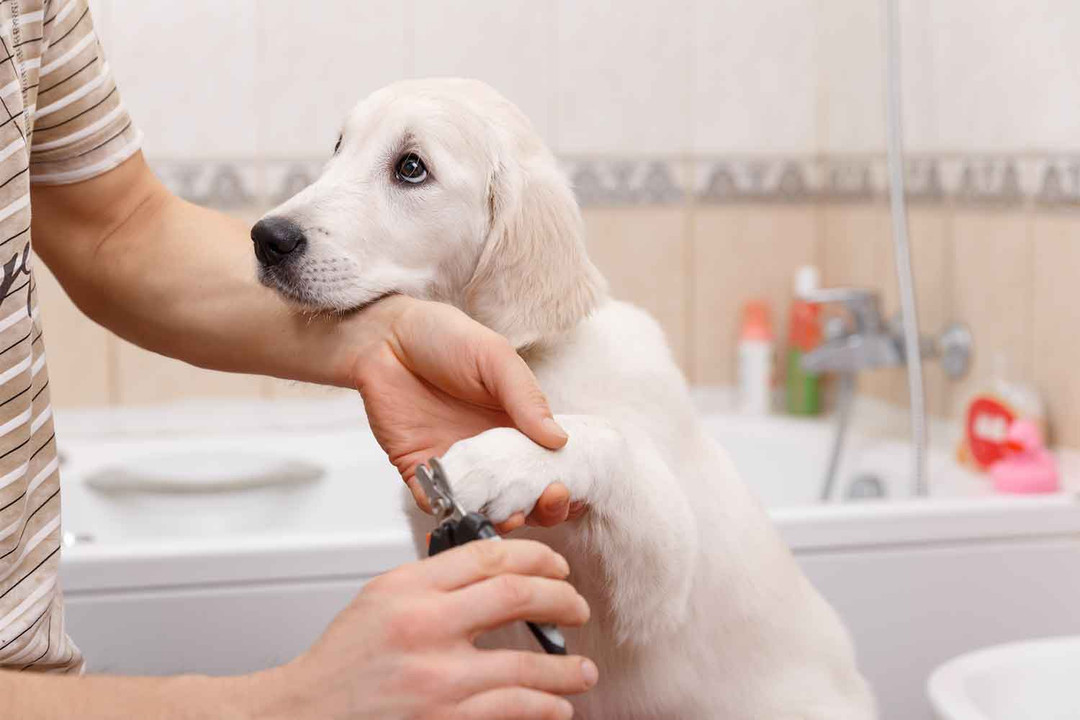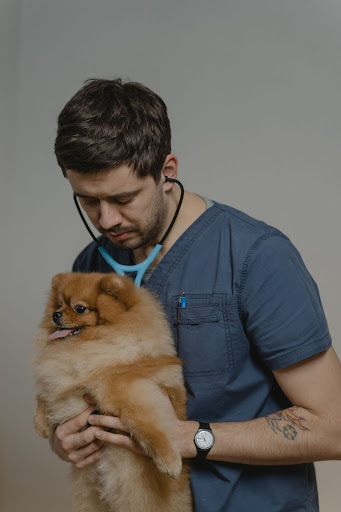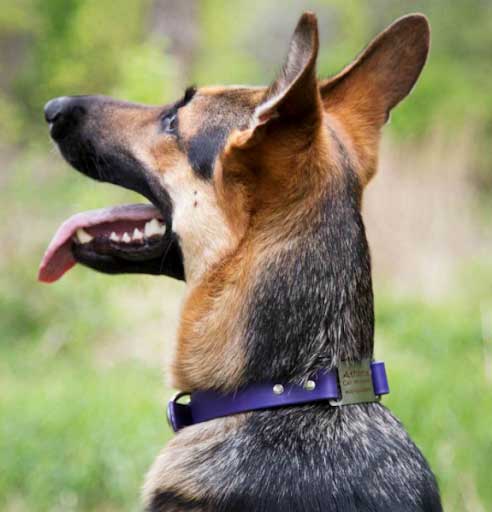5 Ways to be a Responsible Dog Parent

February is Responsible Pet Owner Month and National Spay/Neuter Awareness Month!
With two great (and related) topics being highlighted in February, we thought we’d recap some of our favorite ways to be a responsible dog owner for the furry love of your life. Taking the time to understand and implement responsible pet ownership practices not only ensures your dog's happiness and well-being but also strengthens the bond you share with your furry friend.
1. Proper grooming
It’s important to keep up with regular grooming for your dog to keep them comfortable, hygienic, and healthy. Grooming is not just about keeping your dog looking good; it's crucial for their overall health. Some key regular grooming tasks and intervals are:
Bath - Every 4 weeks. Regular baths help remove dirt, debris, and parasites from your dog's coat and skin, keeping them clean and reducing the risk of infections.
Fur trim (if you have a dog with a long coat) - Every four to six weeks. Trimming your dog's fur prevents matting and tangling, which can be uncomfortable and even painful for them. It also helps in keeping them cool during warmer months.
Brushing - If your dog has a long coat, brush daily. Brushing weekly is okay if your dog has a short coat. Regular brushing helps to distribute natural oils throughout your dog's coat, keeping it shiny and healthy. It also reduces shedding and prevents matting.
Nail trim - Every 3 to 4 weeks. Keeping your dog's nails trimmed is important to prevent overgrowth, which can cause pain and lead to mobility issues. Long nails can also break easily, leading to injuries.
Anal glands - Does your dog ever excrete a strong fishy smell from down there? Yeah, that’s their anal glands. Have them expressed once or twice a year to keep them comfortable and smelling fresh. This helps prevent infections and discomfort.
Teeth brushing - 3 times a week is the vet-recommended minimum. We know it can be a difficult task, and it’s definitely something your dog will need to get used to, but regular brushing removes plaque and prevents tartar accumulation. Dental health is often overlooked but is crucial in preventing tooth decay, gum disease, and bad breath.
2. Dog identification
Every dog owner’s worst nightmare is losing their pet. Perhaps they slip out of their leash on a walk, or escape from a fence gate left open. It happens! Make sure you’re prepared by putting identification on your dog. It’s important to have a dog ID with your dog’s name and a phone number you can be contacted at. This simple step can make the difference between a quick reunion and a long, stressful search.
We know some owners like to have their dog’s collars off to reduce that annoying jingling of their tags. But what would you do if your dog took off without any way to identify them? Identification is crucial, even for the most well-behaved dogs.
dogIDs makes collars with a signature ScruffTag that's connected rather than dangling from it, which ensures that your dog will always have identifying information, such as his or her name, your phone number, and any other important information you want your dog to always have on them. A dogIDs original design, the ScruffTag sits right on the back of the neck, so it’s easy for anyone to see and read without having to handle your dog.
You can add up to 4 lines of text and customize the font when you order a dogIDs collar. The possibilities for creativity are endless! A well-made ID collar ensures that your dog is always identifiable, even if they get lost.
3. Spay/neuter

Do as Bob Barker said! Spaying or neutering your dog is one of the most important ways you can be a responsible pet owner. Not only does it help control the pet population, but it offers numerous behavioral and health benefits for your pet.
Spaying female dogs helps prevent uterine infections and breast tumors, which are “malignant or cancerous in about 50% of dogs,” according to the ASPCA. Neutering your male dog also prevents testicular cancer and various prostate issues. Additionally, neutered male dogs will be less likely to run away from home in an attempt to find a mate. They may also be better behaved and have fewer aggression problems if neutered early in life.
Beyond health benefits, spaying and neutering also contribute to reducing the number of unwanted pets. Shelters are often overwhelmed with animals needing homes, and controlling the pet population through responsible spaying and neutering is essential.
4. Yearly appointments and preventative medication

Credit: Pexels
Taking your dog to the vet for their annual appointment is important to maintain their health and check for any concerning issues. Regular check-ups allow your vet to detect any potential health problems early, when they are easier to treat.
Your vet will also prescribe heartworm and flea & tick preventative medications. These medications are vital in protecting your dog from common parasites that can cause serious health issues. Give these to your dog as prescribed to avoid dangerous and costly health issues. Preventative care is always better and often less expensive than treating a problem once it has developed.
Yearly vet visits also provide an opportunity to update vaccinations and discuss any changes in your dog’s behavior or health. Keeping an open line of communication with your vet ensures that your dog receives the best possible care.
5. Exercise

Credit: Pexels
Keep your dog physically and mentally healthy by providing regular exercise! Walks, runs, swims, fetch - you name it! Regular exercise is essential for maintaining your dog’s physical health and mental well-being. The level of exercise needed depends on the breed of dog you have, but there are plenty of ways to exercise them, even if the weather is cold and you can’t get outside.
For high-energy breeds, more rigorous activities like running or agility training might be necessary. For smaller or older dogs, gentle walks or interactive play sessions can be sufficient. Mental stimulation is just as important as physical exercise, so consider incorporating puzzle toys or training sessions to keep your dog’s mind active.
Exercise not only keeps your dog fit but also helps in preventing behavioral issues caused by excess energy. A tired dog is a well-behaved dog!
Remember to adjust the level of exercise based on your dog’s age, breed, and health condition. Always provide plenty of water and take breaks as needed. Consistent exercise routines can lead to a happier and healthier life for your dog.
6. Quality diet
Feeding your dog a balanced, high-quality diet is important for their overall health. Consult with your vet to choose the best food for your dog's specific needs, considering factors like age, breed, weight, and any existing health conditions.
A good diet helps maintain a healthy weight, supports the immune system, and promotes a shiny coat and healthy skin. Avoid feeding your dog table scraps or foods that are harmful to them, such as chocolate, grapes, and onions.
Consider incorporating fresh fruits and vegetables into your dog’s diet as treats. Foods like carrots, apples (without seeds), and blueberries can provide additional nutrients and variety. Always introduce new foods gradually and monitor for any adverse reactions.
7. Training and socialization
Proper training and socialization are essential aspects of responsible dog ownership. Start training your dog early to establish good behavior patterns and prevent bad habits from forming. Basic commands like sit, stay, come, and drop are crucial for your dog's safety and your peace of mind.
Socialization involves exposing your dog to different people, animals, and environments to help them become well-adjusted and confident. Regular socialization can prevent fear-based behaviors and aggression.
Enroll your dog in a puppy class or training course if you need assistance. Professional trainers can provide valuable guidance and techniques to ensure your dog is well-behaved and responsive.
Remember, training is an ongoing process. Continue to reinforce positive behavior and practice commands regularly. A well-trained dog is a joy to be around and can safely interact with others.
Explore Popular Articles
-
Homemade Flea, Tick & Mosquito Repellent for Dogs: A Natural Recipe for Pet Parents
Jun 13, 2025Beyond the Buzz and Itch: Protecting Your Pup from Mosquitoes, Fleas, and Ticks As pet parents, we w
-
Can My Dog Eat This? A List of Human Foods Dogs Can and Can't Eat
Jun 04, 2025As loving dog owners, we consider our furry companions members of the family. They share our homes,
-
How Long Are Dogs Pregnant - Tips for Care & Safety
May 15, 2025Congratulations! If you’re reading this, your furry friend is likely expecting a litter of pup





